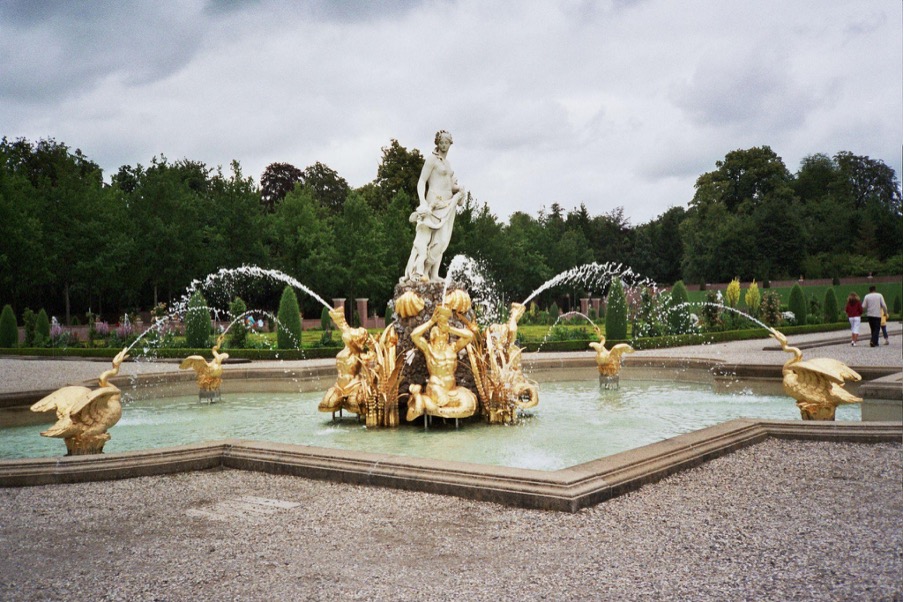The Mentality That Finland’s Mandatory Military Service Brings to NATO
.jpg?sfvrsn=7c91acdf_1)
Published by The Lawfare Institute
in Cooperation With

The duty of Finns to defend their country is in the Finnish Constitution, Chapter 12, Section 127, which begins with “Every Finnish citizen is obligated to participate or assist in national defence.” Finland’s mandatory military service law, also known as the Conscription Act, fleshes this out: “Every male Finnish citizen is liable for military service starting from the beginning of the year in which he turns 18 years old until the end of the year in which he turns 60, unless otherwise provided for herein.”
There are several ways to fulfill this obligation; armed service in the Finnish Defence Forces is just one of them. But a substantial majority of male Finns go the military route. As a result, most men of each generation spend significant time learning practical military skills.
Conscription remains rare among NATO’s members. In fact, only Denmark, Estonia, and Greece stand with their new ally Finland by having compulsory military service. Finland’s 1,300 km long eastern border and relatively small population of 5.5 million leave it little alternative but to require such widespread military training. Without it, a credible national defense and sufficient deterrent against any would-be aggressor would be largely absent.
That is, however, far from the sole value of the Conscription Act. My own experiences as a conscript and reservist in Finland have ingrained within me not only fundamental military skills that could someday help me to defend my country but also some important life lessons. And NATO, too, is now poised to benefit from it all.
The Call-Up
In the autumn of 2001, in the main congregation hall of the small municipality I grew up in, I was seated next to a couple dozen other men of my generation. All of us had at least two things in common: We lived in the same municipality, and we were going to or had turned eighteen that very year. Only some of us had driver’s licenses, but all of us had received summons to attend a call-up event for mandatory military service. In short, we were about to become adults. Then, as now, the call to serve applied to everyone—urban and rural, bankers’ sons and farmers’ sons, bookish teens and sports stars like Utah Jazz all-star forward Lauri Markkanen.
Though the Conscription Act does not compel women to join the military, since 1995, Finnish women have had the opportunity to serve voluntarily in the Finnish Defence Forces. Women have identical service requirements and training as men; the same applies to leadership training and prospects for a military career. Over the past several decades, military service has gradually gained popularity among Finnish women, with an overall upward trend in female enlistment. While there were around 800 applications from Finnish women in the first year they were allowed to serve, the latest application period for women’s voluntary service, ending in January 2023, brought in 1,258 applications.
The call-up event for conscription is itself an efficient and smooth process. A three-person call-up board quickly completes several tasks with the young Finns before it. The board provides information and guidance. It checks conscripts’ personal information and health status. It receives their wishes for their future units of service. And then come the judgments about these citizens’ capability to serve as well as when and where they will do so.
The martial character of service might end right there. Having a medical disability could either alter one’s personal fitness rating or spur an exemption. One can also fulfill the requirement by serving unarmed in the Finnish military, performing civilian service, or not serving at all, in the case of those who hold an ethical conviction that prohibits military service (such as religious beliefs or pacifist views).
In the end, I got orders to report to the Jaeger artillery regiment of the armored brigade. As a student of military history and a fan of tanks, I felt it was a dream come true.
The Early Training Experience
From the moment I began that service in January 2003, several options lay before me. The shortest was that of rank-and-file duties (165 days), followed by special skills rank-and-file (255 days). The length of service for those undergoing noncommissioned officer (NCO), officer, or more advanced rank-and-file training stood at 347 days. If I had chosen either unarmed service in the military or non-military service, these would have been for 255 and 347 days, respectively. Another path (albeit one path I never considered) was total refusal to even participate in the process—a choice punishable by a jail sentence without the possibility of parole for up to 174 days. Non-military service, ethical/religious exemptions, and rejections for health reasons are all relatively rare, keeping roughly 70 percent of Finnish men who reach call-up age in the military service every year.
On a crisp winter day in early January 2003, I arrived at Hämeenlinna city train-station, 100 km due north of Helsinki, to transition from civilian to soldier. I joined the somewhat nervous crowd of other soon-to-be privates of the Finnish military, stepping onto the bus taking us to the military base of the armored brigade, some 12 km away. (The speakers blared out the song “In the Army Now” by Status Quo.) At the base we were divided into our parent units, given our military equipment, and told to put our new gear into personal lockers at the barracks. For the next six weeks, in what was coined the “B-season” (B for basic), we would learn the fundamentals of military discipline, of following orders, of handling weapons. Just as importantly—perhaps more so for our future lifestyles outside military service—we would work on our mental and physical fitness and learn quickly to work with our fellow citizens in army fatigues.
From the very first exercises in the field, we were taught that if war came to Finland, our adversary would have superiority in numbers on land and in the air. This meant that we needed to learn how to use every advantage to even the playing field: camouflaging positions, finding cover from artillery and aerial bombardment, and embracing the terrain. Even in the artillery, we were trained to use anti-tank mines and anti-tank bazookas, we learned basic defensive and offensive infantry tactics, and we excelled in marksmanship and first aid. Basic outdoors skills were emphasized, ranging from how to stay hydrated to how to dress during winter, to how to place your rubber boots close enough to the tent stove to dry without melting. When the mission is the defense of every inch of your large country’s soil against a powerful adversary, the military does not have the luxury of skimping on the basics.
We were being taught how to survive, fight, and prevail in an old-fashioned land war—decades before Russia’s genocidal invasion of Ukraine in February 2022. Many other nations in NATO had repurposed and severely downsized their militaries to reap the perceived peace dividend and to conform to an expeditionary force doctrine. Finland, by contrast, never stopped preparing to fight a full-scale war to safeguard its independence in the event of an attack.
There was a higher purpose, too, in learning to function as a part of a team while doing things for the first time in your life that you probably never wanted to do. Adapting to a strange new setting with people who I had only just met taught me not to fear change—and, further, that navigating new challenges depended on camaraderie and trust. All of this provides a good foundation for adult life and constitutes one of the basic blocks of Finland’s concept of a comprehensive security.
The early training experience seems to reinforce Finns’ personal commitment to national security. According to a survey by the Standing Committee on National Defence Information, the Finnish will to defend the country with arms reached a historic high of 83 percent last year. A similar 85 percent of respondents viewed Finland’s NATO application positively. Notably, support for Finnish mandatory military service itself stands at a record high of 82 percent. For comparison, when German and Dutch citizens were asked whether they would be willing to defend their country, in a survey conducted by the Worldwide Independent Network and published last May, the question produced responses of only 22 percent and 16 percent, respectively.
Tanks for the Memories
Toward the end of our “B-season,” conscripts sat down with instructors to help them decide the course of our further military training. In the case of my self-propelled artillery unit, our basic choices were SPG gunner, loader, driver, or commander; the first two training tracks lasted a total of 165 days while the others lasted 347 days. We were also evaluated for leadership potential by our instructors, both physically and mentally, for the NCO-track that might lead to officer training as well. We all had chances to lead our fellow recruits on parade ground drills and in small-level squad exercises. As this service training advanced, it became apparent that my physical fitness, despite progress, was wanting.
After toying with 165 days either as a loader or a gunner, I faced a simple but consequential question from my instructor that caused an about-face in my military career: “Why are you here?” My answer was quick and simple: “I have been fascinated by tanks all my life.” Therefore, I was slated for an armored vehicle driver position. During my subsequent days of armored vehicle training, I got to know the originally Soviet 2S1 self-propelled howitzer (SPG), which in Finland is called the “122 panssarihaupitsi 74.” We learned the basics and technical details of the vehicles in the classroom and in the field. Intense practice and feedback greatly improved and deepened our crewmen skills in day-to-day operations of the vehicles.
Ultimately, I qualified as an SPG driver and received my tank driver’s license. To my surprise, I was transferred from my SPG battery to become a command post vehicle driver at the command and signals battalion of the artillery regiment. Another surprise: My designated vehicle commander was a woman, which at that time was still a rarity. During the next two months, she and I would master our new vehicle, the MT-LB/U, as a tight-knit team. Meanwhile, new recruits of the second yearly intake of conscripts would undergo their own “B-season” training before joining us for our final phase of unit training.
Those remaining months included successive field exercises to become one with our vehicle and create an efficiently functioning, conflict-ready unit. The final test, in November-December 2003, saw the entire Jaeger artillery regiment move with its equipment via rail and road transport to the Rovajärvi live-fire and exercise range in Lapland—the largest artillery training area in Europe. During our so-called End War, thousands of military personnel engaged in unit-level maneuvers and live-fire exercises for two weeks. Our skills had been honed to a razor-sharp edge, and our driver-commander teamwork proved seamless. We prepared meticulously for eventualities of war: One artillery battalion command post team duty, for example, was to camouflage the command post after each position change—a mission we took seriously because we knew that in a real situation, we would be a primary target of hostile air assets and artillery fire. One also couldn’t help feeling even deeper respect for the generations of war veterans, now all but passed to the hereafter, who survived and persevered through World War II. Nights without sleep due to the constant sights, sounds, and feelings of heavy artillery firing and hitting their targets left me longing to bathe in a sauna.
Most of all, even two decades later, the confidence gained from missions well-executed and from challenges overcome remains perfectly clear in my memory.
The Finnish Mentality and NATO
Shortly after the End War had concluded, we returned our camouflaged military attire and returned to civilian clothes. On joining the Finnish Defence Forces reserve, I entered one of the largest military reserves in Europe, of some 870,000 well-trained men and women. For the rank and file, reserve status and its maximum 80-150 days of refresher training lasts until the age of 50. Officers and NCOs extend their service to age 60 and up to a maximum 200 days of refresher training. Regardless of rank, everyone remains in the auxiliary reserves between the ages of 18 and 60.
The benefits to Finns and Finland have long been known. Entry into the reserves brings a duty to maintain physical and mental fitness. The leadership lessons, the sense of responsibility, and the skills needed to act in a wartime setting endure. Finns retain working knowledge of what it means to be a small but valuable cog in a large machine. All of this fortifies, and is fortified by, the high will to defend one’s country—and, now, one’s NATO allies—against armed aggression. In the large Finnish reserves, NATO has just received an injection of determination and spirit that the term “sisu” only begins to cover.
Considering how many men and women in Finland have undergone military training, it is no wonder that the concept of comprehensive security has evolved extensively there. The concept encompasses all actions needed to safeguard national independence and the welfare and safety of citizens from threats posed by foreign nations or other actors, including through cooperation among government authorities, businesses, civic organizations, and citizens. Continuous cooperation exercises prepare groups and individuals for emergency situations ranging from storms and floods to pandemics, civil unrest, and military threats. Additionally, quarterly national defense courses arranged by the National Defence University improve cooperation of different sectors of society in emergency conditions and promote the networking of people working in different fields related to comprehensive security.
How serious is NATO’s newest member about the security of its people? Finland has 50,500 civil defense shelters, capable of housing 4.8 million people. Every building larger than 1,200 square meters that is built or renovated in the country to be used for permanent housing, work, or other such residency must have a civil-defense shelter.
Finland’s mandatory military service also breeds familiarity among the professional officer corps, NCOs, and the rank and file that was already a national characteristic since Finland’s independence. An instructor might chew you out one minute for dropping your rifle but in the next find out that you grew up in the same area and immediately warn you not to get too friendly with the local gas station’s wife, because the husband owns a shotgun.
Adolf Ehrnrooth, a Finnish retired general of infantry and World War II veteran who participated in public life until he was well past 90 years old, is often quoted as having said, “Finland is a good country. It is worthy of defending and its defender is the people of Finland.” He also said, “We should make sure that Finland will never stand alone as it did during [the] Winter War.” With Finland now the 31st member of NATO, these quotes are more true than ever—Finland will never again stand alone. And, perhaps, the Finns can teach their NATO allies a thing or two about determination, preparedness, and comprehensive security. Among the many assets that Finland brings into the alliance, this mentality means the most.



.jpg?sfvrsn=b3d4eb92_7)

